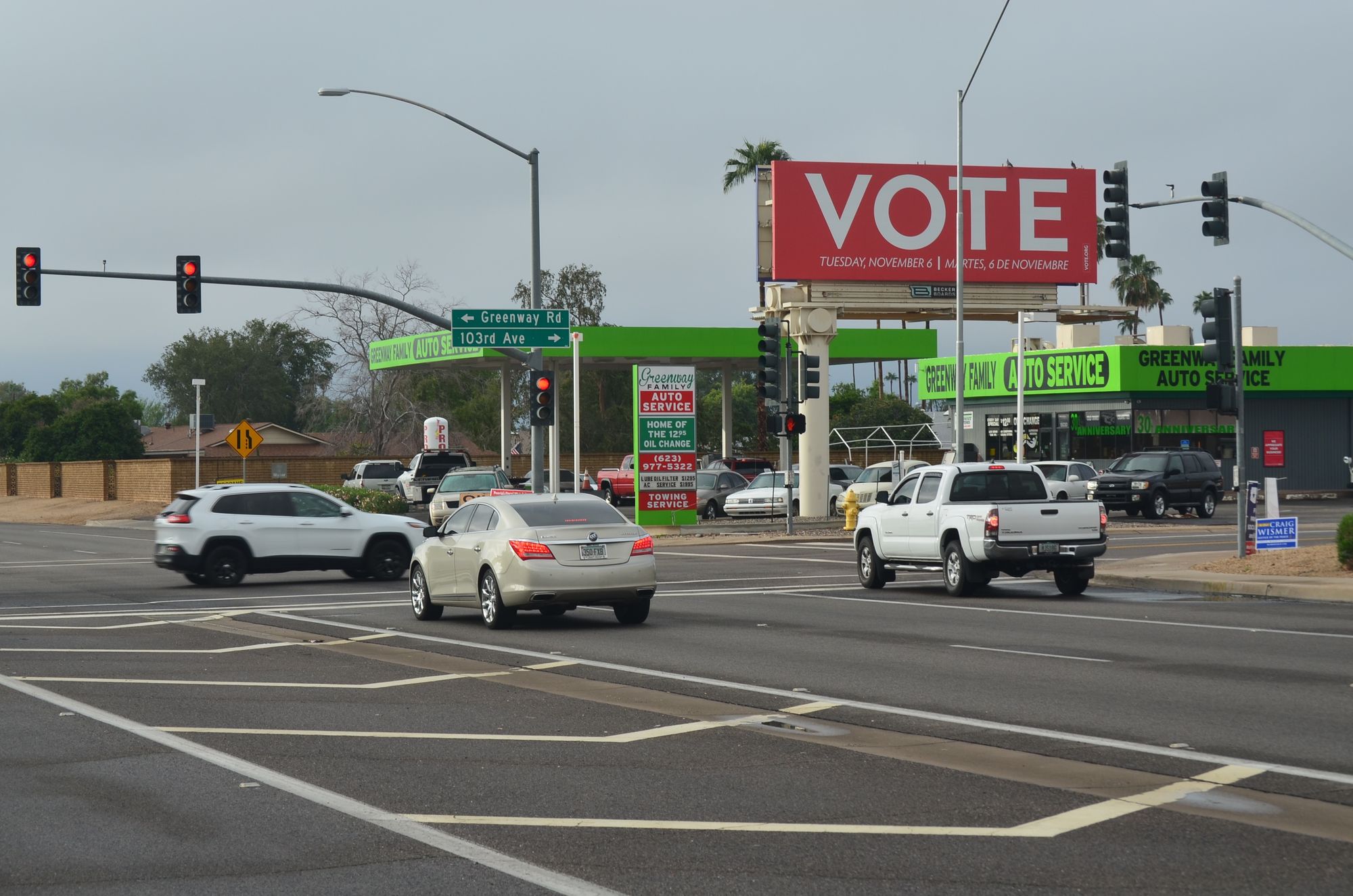How Vote.org Empowers the American Public with AdQuick
It’s undeniable that we’re living in a unique time in human history. Technology has proliferated to the point at which algorithms move infinitely faster than brains can comprehend.

It’s undeniable that we’re living in a unique time in human history. Technology has proliferated to the point at which algorithms move infinitely faster than brains can comprehend. Not to mention, most people in the world have access to the digital world through now-commonplace devices in our pockets.
But there are still many cracks in the fabric of our interconnected, global economy. The biggest one is that despite the availability and abundance of resources, the world is still overrun with inequality. That’s why the United Nations has put such a hard push behind its 17 sustainable development goals that include zero poverty, zero hunger, good health & well-being, gender equality, quality sanitation, climate action, and more.
One of the challenges with attaining these goals, particularly in the United States, is that too many people are blocked from exercising their voter rights. A lack of education contributes to this problem, resulting in detrimental cycles of voices going unheard.
Vote.org, a nonpartisan nonprofit, is on a mission to protect Americans’ rights to vote. As Ronald Reagan, the 40th President of the United States once said, “The right to vote is the crown jewel of American liberties, and we will not see its luster diminished.”
Providing education to the American public is critical to fortifying the integrity of this right, no matter where voters fall on the political spectrum. Vote.org works with AdQuick to share critical information with the American public, on a massive scale and at an expedited time frame.
Empowering the public with a meaningful message
“We follow the marketing rule of seven,” says Debra Cleaver, former CEO at Vote.org, founder and CEO at Long Distance Voter, and lifelong political activist. “It takes seven touches to convert audiences into cast ballots.”

Vote.org uses a mix of broadcast media, digital advertising, and out of home strategies to connect with the American public. She elaborates that this messaging tidal wave is necessary to combat the forces that contribute to voter suppression.
“We’ve reached this place in our society, where politicians choose their voters instead of voters choosing their politicians,” she explains. “What both sides of the aisle should be doing is building platforms that appeal to a majority of people—not using behind-the-scenes data and statistical practices to pick their own voters in a way that guarantees wins.”
The only way to counteract this force is to inspire people to care — to help them recognize that yes, voting is worth it, that yes, their voice matters, and yes, that their human willpower is extraordinary.
“As Americans, we just assume that everything will be okay because everything has been okay,” says Cleaver. “But the future has not been written, and the past is not a guarantee of the future. As people, we need to take care of getting the things that we need, done.”
Billboard campaigns, according to Cleaver, are essential to helping the public internalize this message.
Reaching people of all walks of life
One of America’s strengths is the diversity that exists within its population. Despite the things that divide us, what we share in common, as citizens under one nation, are our fundamental human rights.
“People want clean air and clean water,” says Cleaver. “We want decent jobs that pay livable wages, and we don’t want to die of preventable diseases because we don’t have health insurance. We want decent standards of living for ourselves and our families, as well as education that leads to good jobs.”
Despite Americans caring about these core needs as people, it’s often challenging to develop messaging that strikes the same chord with everyone. Groups within America — defined by educational attainment, race, geography, and other demographic variables — resonate with different value propositions.
That’s why Cleaver crafts every billboard campaign with deep attention to detail, to meet the needs of the people she is trying to reach.
“Thanks to AdQuick, we are able to specifically target regions that have high populations of low-propensity voters,” she explains. “We are able to reach people who aren’t being targeted by partisan groups — or that partisan groups are neglecting. We’re putting billboards in the exact areas where the people we need to reach, predominantly poor people, are congregating.”

Campaigns include:
- Billboards that remind people to vote
- Resources that teach people how to register to vote
- Campaigns that debunk myths and misconceptions about voting
“We’re trying to undo decades of voter suppression and voter neglect,” says Cleaver. “We and our academic partners are confident that we are creating billboards to reach people who get no other election messaging or encouragement whatsoever. Without AdQuick, this project would be a nightmare. The platform is powerful.”
Using advertising budgets wisely
Running nimble nonprofits, Cleaver does not have the budget on-hand to keep up with mainstream media. Instead, she relies on her team’s creativity, strategic thinking, and abilities to find high-impact marketing opportunities. With a background as a media buyer of high-volume placements, she explains that billboard advertising is one of the most cost-effective ways to reach an audience.
“When I say it’s affordable, it’s affordable,” she says. “Even more important, billboards are memorable. Some are even famous.”
With AdQuick, Cleaver is able to make careful decisions about every single billboard that she chooses, ensuring that each one will reach audiences in an intentional way.
“With Google Street View, I can actually see the surrounding areas for every placement,” she says. “AdQuick allows us to scale quickly, effectively, and cheaply. We don’t need to make any sacrifices when it comes to connecting with the American public in an impactful and meaningful way.”
Contributors Statement
This blog post was a collaboration between the AdQuick team. Chris Gadek, John McClung, and Jack Gaylor contributed to this piece. Payton Biddington created the visuals.If you'd like to learn how out of home can work with your unique marketing campaign and business, send a quick email to [email protected] or call (213) 986-6179. We'll reach out with case studies and recommendations tailored to you.
Disclosure
The opinions expressed are those of the authors. This material has been prepared for educational purposes only. Please be sure to consult with your internal team of stakeholders to assess your specific needs before adapting any practices from this blog, as your own.

